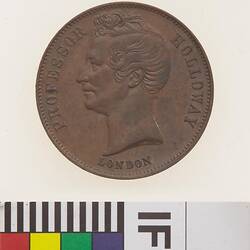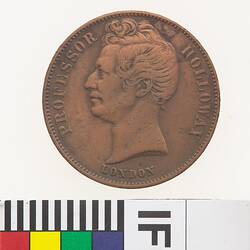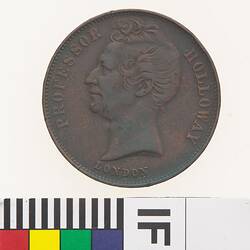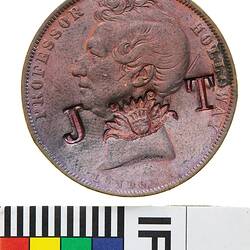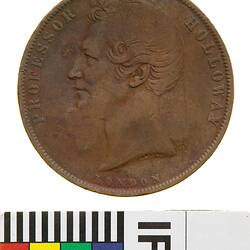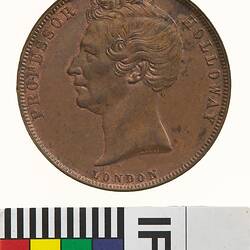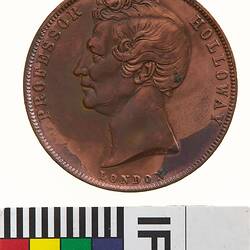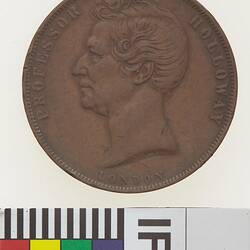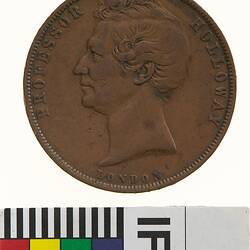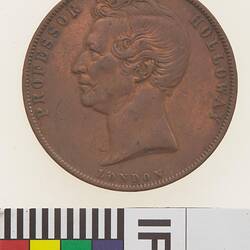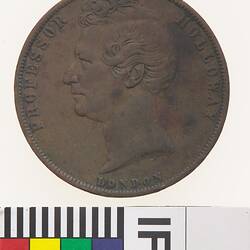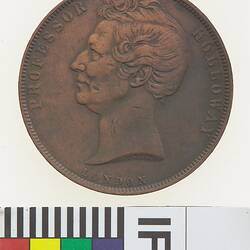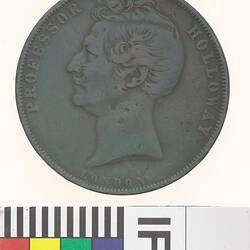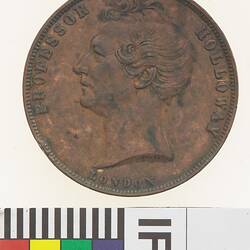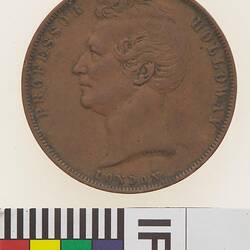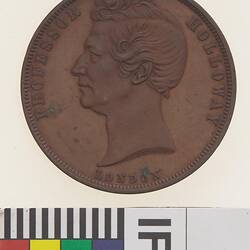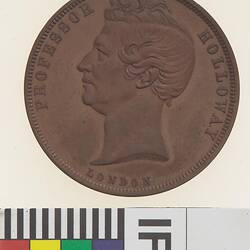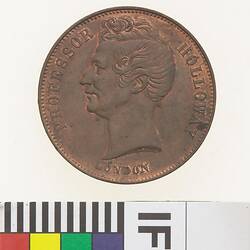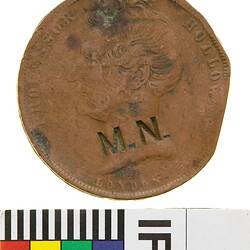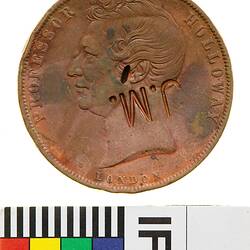Born in Birmingham, Joseph Moore was apprenticed at a young age to diesinker Thomas Halliday. He also trained under Samuel Lines, another diesinker and engraver. After completing his apprenticeship he began his own business as a buttonmaker, winning a prize at the 1851 London Exhibition for his work. While engaged in his apprenticeship and working as a buttonmaker, he studied in his own time to gain the skills of a medallist.
He was a designer of medals principally, but first came to public attention when he created a 'model penny' in 1844. This penny was so popular with the public that the coin diesinker at the Royal Mint felt compelled 'to advertise the fact that [the pennies] were the result of private enterprise and not a government issue' (Forrer, 1909). For some time he was in a partnership, Allen and Moore, thought by some to be the best medallists of the later nineteenth century.
Moore created some of the dies used by Heaton and Sons to produce coins and tokens. He is credited as the designer of the penny and halfpenny tokens issued by Professor Holloway (A660-A672) in 1857 and 1858. Sweeny argues that Holloway's tokens were produced in Heaton and Sons' Birmingham establishment, on the basis of cardboard impressions taken from dies bearing Holloway's head that were donated to The Birmingham Museum and Art Gallery by The Mint, Birmingham. Moore died in 1892.
References:
Sweeny, J.O. (1981). A Numismatic History of the Birmingham Mint, p.240, 245.
Forrer, L. (1909).Biographical Dictionary of Medallists, Vol. IV, pp.136-141.
More Information
-
Keywords
-
Localities
-
Authors
-
Article types


